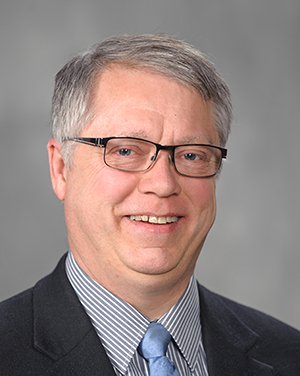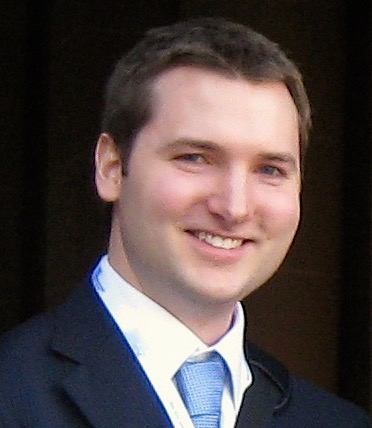By Joseph Palmersheim
In our Aug. 4 issue, we introduced you to several MnDOT employees who teach within the MnSCU system. Here is part two of that story.
Frank Loetterle teaches planning fundamentals

Frank Loetterle. Submitted photo |
Frank Loetterle, planning director with the Office of Freight & Commercial Vehicle Operations, teaches a “Fundamentals of Transit Planning” in the Urban Studies program at the University of Minnesota. The Urban Studies program is part of the Department of Geography, Environment and Society.
Loetterle started teaching a seminar in the Urban Studies program in 2001 to get teaching experience, in anticipation of applying for a university position. Instead of finding a teaching job, he started working at the Metropolitan Council as the regional transit planner for light rail projects, working primarily on the Hiawatha LRT project. His seminar was converted to a regular catalogue course in 2005, and he’s taught the class every spring since then.
“When I started teaching the class, I was actively working as a transit planner,” he said. “But I now focus on intercity passenger rail service. A big challenge is staying up to date on a topic that I don’t work in professionally anymore. Teaching forces me to keep up to date with developments in the transit industry. My class is popular because I bring real-life planning experience to the topic.”
Loetterle noted that he was “surprised and pleased” at how fulfilling teaching is, adding that students that took his class have moved on to become transit planners in the Twin Cities and around the country.
“Locally, some of my former students are at Metro Transit, the Metropolitan Council, Washington County and several consultant firms,” he said. “Other students work at planning positions at the National Park Service, the California Department of Transportation, the city of Seattle and other cities around the country. At least one of my former students has started his own consulting firm specializing in the railroad industry.”
Ben Lowndes explores ‘justice’ with students

Ben Lowndes. Submitted photo |
Ben Lowndes, Operations Division liaison, started with MnDOT as an ombudsman in 2015. Two years later, the Mitchell Hamline School of Law graduate returned to his alma matter to serve as an adjunct professor, teaching a Justice and Dispute Resolution course.
The course is a theoretical and philosophical exploration of the concept of “justice” through the lens of alternative dispute resolution processes. He’s also assisted with other ADR courses such as Negotiation, Theories of Conflict, and Cross-Cultural Dispute Resolution.
It wasn’t his first time at the front of a classroom.
“Prior to law school, I was an English instructor at University of Nebraska at Omaha, so I was excited to have the opportunity to teach and mentor students again,” he said.
Teaching has been “a wonderful opportunity to reflect on the practical application of the subject matter while also re-examining nuances of the content itself,” he said. For instance, Lowndes has used theoretical negotiation concepts at MnDOT while helping the Blowing Snow Control Shared Service develop a negotiation approach for landowner snow control agreements.
“Serving as an adjunct professor has been an awesome opportunity to stay up-to-date on theory and current research while continually growing as a professional at MnDOT,” Lowndes said. “I thoroughly enjoy the balance it provides.”
Joel Sween shares American Sign Language immersion

Joel Sween. Submitted photo |
American Sign Language is more than just a classroom concept for District 6 transportation generalist Joel Sween, who serves as an adjunct professor teaching ASL 1 and 2 courses at Minnesota State University-Mankato.
He became deaf as a result of spinal meningitis at age 1. He is completely deaf in his right ear, with some residual hearing in his left ear. Sween wears a hearing aid in his left ear, which helps him hear sounds and communicate with people.
“I have been teaching since 2008,” he said. “At the time, I was in my last semester as a construction management student and they were looking for people who had expertise in American Sign Language. As a deaf person and native speaker of both English and ASL, it was the perfect part-time job for me.”
While he might be fluent in ASL, his students may not be. Sween’s courses are “100 percent immersed in ASL,” meaning he turns his voice off in the classroom. Students sometimes have to come up with other ways to communicate with him, such as signing, finger spelling (if they don’t know the sign), email, use of pen and paper, and gestures.
Fitting his teaching schedule into his 10-12 hour work days as a construction inspector has been a challenge, Sween said, but being able to record lessons ahead of time has helped. His students seem to like it, too, being able to take the courses at their own pace.
“What I have learned from teaching is that every person is different and they come from different backgrounds,” Sween said. “I have learned over the years that you have to be patient with students because everyone’s skill levels are different. Some students are shy and others are more than willing to be in the spotlight. My goal is to bring everyone to the level where they are more confident in themselves.”
Hally Turner curates meaningful student conversations

Hally Turner. Submitted photo |
Hally Turner, policy planning director, co-teaches two public engagement courses at the Humphrey School of Public Affairs. Her co-teacher, Katie Caskey, previously worked in the Office of Transportation System Management before taking a job at HDR.
She started teaching in 2020, and is set to teach again this fall. Like much of the world, Turner had to adapt to a changed reality.
“Learning to teach in a pandemic is no joke,” Turner said. “We had to navigate new content and learning platforms while also responding to the professional and personal needs of our students. Through this experience, I became better equipped to respond to challenges in the workplace, from providing constructive feedback to meeting management. I changed how I present information in a virtual environment and have more tools and ideas to make meetings run smoothly. Sharing these lessons with my team has resulted in external partners asking for agendas and PowerPoints to model upcoming events based on our meeting structure.”
Teaching a subject that is close to her day job - public engagement - allowed Turner to practice, in real time, with the information, tools and strategies she was sharing with students. The students, she said, have “a great intuition about policy and public engagement.”
“I thought I would come into a classroom and impart my wisdom,” Turner said. “I spent many classes feeling like I served less in the role of lecturer and more in the role of curator of meaningful opportunities for them to connect, share and practice their recommendations for public engagement.”
Turner plans to teach a class on Outreach Methods and Communication this fall, followed by Public Input in Decision Making next year.
| 


